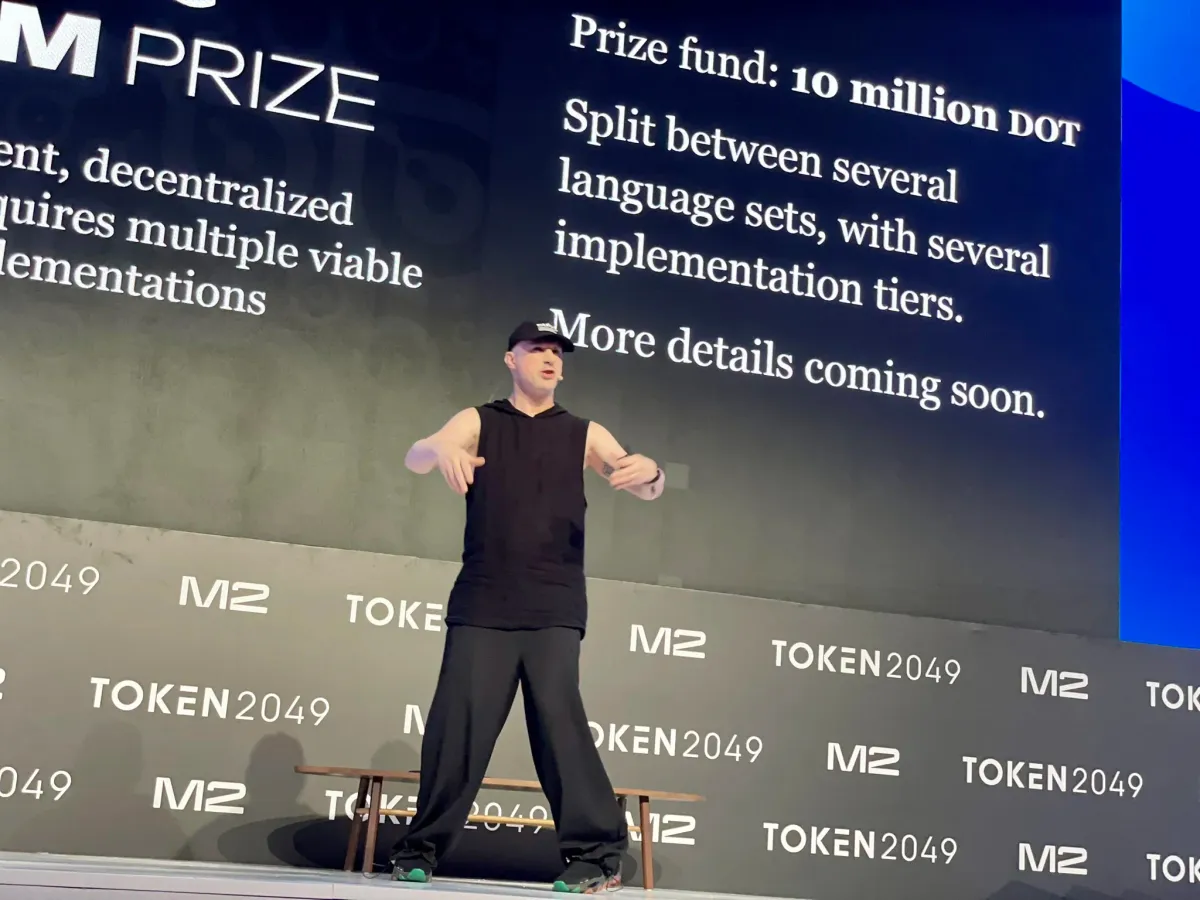
Last week, at Token2049 in Dubai, Polkadot co-founder Gavin Wood introduced the Join-Accumulate Machine (JAM) through a Gray Paper, marking the 10-year anniversary of his iconic Yellow Paper. JAM is a proposed "major revision" for the Polkadot network that would fundamentally overhaul its core infrastructure.
The Polkadot network currently relies on the Relay Chain, a central hub for communication and consensus across parachains (independent blockchains). The new system would replace the Relay Chain with a more modular and lightweight design: a "global singleton permissionless object environment," similar to Ethereum's smart contract environment but within a scalable node network like Polkadot. This would enable on-chain processing and logic execution, potentially overcoming limitations of the current Relay Chain architecture.
Earlier today @gavofyork unveiled the JAM Gray Paper.
— Polkadot (@Polkadot) April 18, 2024
JAM is a protocol combining elements of both Polkadot and Ethereum. It is a prospective path to replace the Relay Chain with a more modular, minimalistic design.
1/5 https://t.co/3kTGVFBOJA pic.twitter.com/NtOuF1KHua
The Grey Paper discusses the "size-synchrony antagonism," a principle indicating that as the state-space of information systems grows, they become less synchronous. This leads to the need for the system to manage asynchronous operations effectively.
JAM is described as a "decentralized hybrid system offering smart-contract functionality structured around a secure and scalable in-core/on-chain dualism." This system aims to maintain blockchain's security and decentralization while enhancing its scalability and performance.
A significant feature of JAM is its ability to support generic "services" that would act similarly to smart contracts, capable of processing and manipulating data retrieved from blockchain cores within the Polkadot ecosystem. This expanded functionality could allow a wider range of decentralized applications (dApps) to be built on Polkadot, attracting more users and developers to the network.
"When fully built out, JAM will be a distributed computer that can run almost any kind of task, that can be expressed as a service. JAM moves Polkadot toward a world of synchronous composability, which will help reduce the fragmentation and consolidate activity, so apps on Polkadot are better able to tap into the network efforts of the ecosystem as a whole. This will unlock a new horizon of possibilities for deep innovation and provide developers with a powerful environment where they can create like never before." source: polkadot.network/blog
The transition to JAM would not necessarily disrupt existing parachains. Developers who have already built parachains using Substrate, a popular blockchain development framework, can continue using it within the JAM framework, Polkadot said on X. This ensures continuity and avoids the need for a complete overhaul of the existing blockchain infrastructure within the Polkadot network.
"The only way to interact with JAM will be with DOT, no new token will be issued."
To encourage the switch to JAM, the Web3 Foundation, the organization behind Polkadot's development, announced the JAM Implementer's Prize – a 10 million DOT war chest to foster a diverse developer base and accelerate innovation. This focus on a varied developer pool strengthens the network's resilience by reducing the risk of a single software flaw crippling the entire system. Additionally, the Web3 Foundation sees the prize as a catalyst for innovation by encouraging development in various programming languages like OCaml, Go, and Zig. By supporting these teams, they hope to unlock new approaches and improvements for the JAM protocol, ultimately leading to a more robust and versatile Polkadot ecosystem.
The prize is contingent on the ratification of JAM. The Polkadot community can already vote on Referendum 682 to decide on whether to adopt the JAM upgrade.

